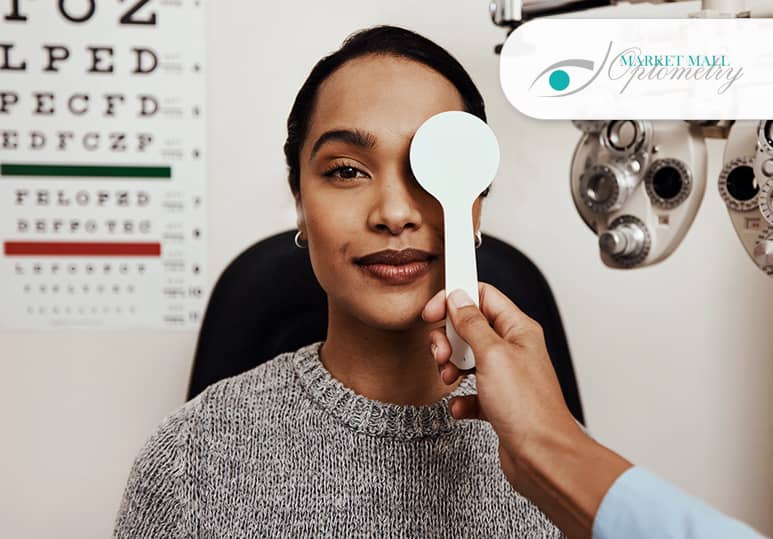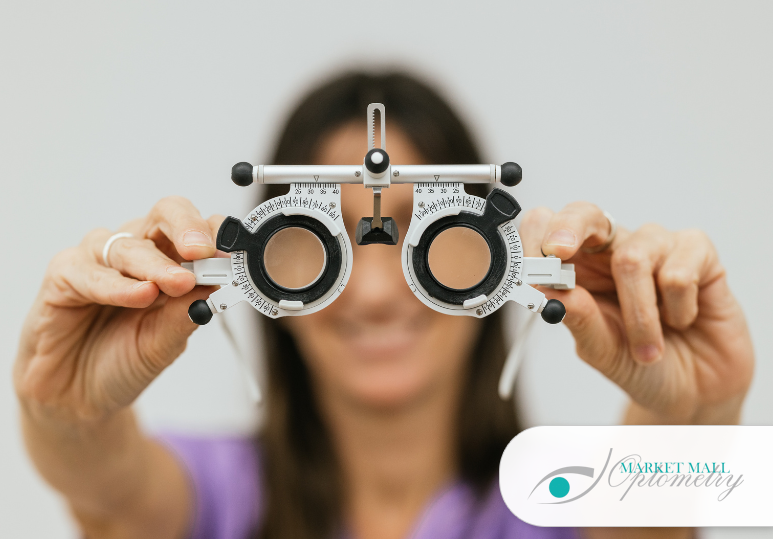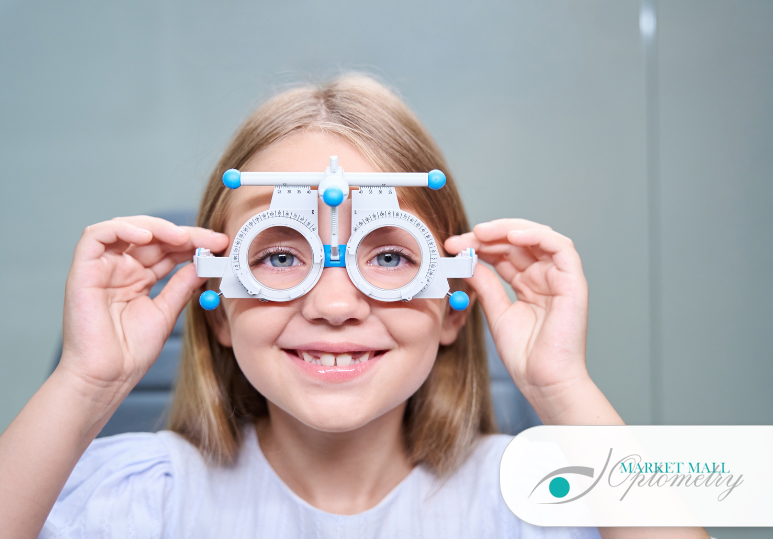Your Optometrist Uses These Tests To Determines Your Prescription
Automated Tests. During an eye exam, your optometrist will use a machine called an autorefractor, which detects a person’s refractive error by measuring how light is changed as it enters the eye. Three measurements will be taken and the average will be used as your general prescription. This test only takes about 10 to 15 seconds and is the starting point before the prescription is perfectly determined. A device called a keratometer may also be used. This is another automated test but this one measures the curvature of the cornea to diagnose the degree of astigmatism as well as if a person is a good candidate for LASIK eye surgery or if they can wear contacts.
Manual Refraction Tests. A refraction test determines the degree your eye deviates from what it should be. To get an exact prescription, your optometrist will use a phoropter to test your vision through multiple lenses. A phoropter is a tool that lightly sits on the bridge of your nose so you can look through lenses that are switched out. You are asked which of the two options allows you to see best for multiple rounds until your vision appears clear. As you answer the questions about which lens offers more visibility, your optometrist will fine-tune the lenses until you reach the right prescription.
Prescription Variation. When you receive your prescription, you should note that an eyeglass prescription and a contact lens prescription will be different, as one rests directly on the eye while the other sits in front, altering the way the light enters and how the lens needs to be shaped. Prescriptions can also change over time as eye shape changes, especially for children who are still growing or for people with myopia where the eye can grow longer all their life. Age can also affect eye prescription with many people over 40 developing presbyopia. Because of changes in prescription, as well as checking on general eye health, it is important to see the eye doctor annually.
Visit Market Mall Optometry In NW Calgary For An Eye Exam
Keeping your prescription up to date is important for reducing eye strain and assuring a higher quality of life. Eye exams benefit your overall health, as they check your visual health and can detect any eye diseases or underlying health issues, such as high blood pressure or type 2 diabetes. Visit an eye doctor from Market Mall Optometry in NW Calgary to keep your prescription up to date and track any existing conditions. Our proficient team can perform eye exams for children, adults, and seniors. To book an eye exam, call us at 1-403-286-4884 or fill out the online contact form.
FAQ
Q: How long does it take to adjust to a new prescription?
A: A large number of patients report some visual discomfort, such as distorted vision, a “fishbowl” effect, mild headaches, or eye strain with a new prescription. These symptoms can be due to your eyes adjusting to new lenses, a difference in frames and lens shapes, or a switch to a progressive lens. This discomfort will typically last a few days; however, if you notice discomfort lasting a week or two after receiving your new lenses, be sure to discuss the issue with your optometrist.
Q: How long do comprehensive eye exams take?
A: Most comprehensive eye exams take less than 60 minutes depending on what your vision requirements are and what vision tests are performed.
Q: Are comprehensive eye exams uncomfortable?
A: A comprehensive eye exam is non-invasive so you will not feel any pain or discomfort for the duration of the exam.





